11 Simple Ground Cover Plants Ideal for Sloped Yards
If you’re looking to enhance your sloped landscape with minimal effort, ground cover plants are a fantastic solution. These plants not only add beauty and texture but also help prevent soil erosion by stabilizing the ground. With the right choice, you can create a lush, low-maintenance garden that requires little upkeep while thriving in sloped areas. From drought-tolerant varieties to those that thrive in shade, there are plenty of options to suit your landscape’s unique needs.
This post may contain affiliate links, which helps keep this content free. Please read our disclosure for more info.
Creeping Thyme
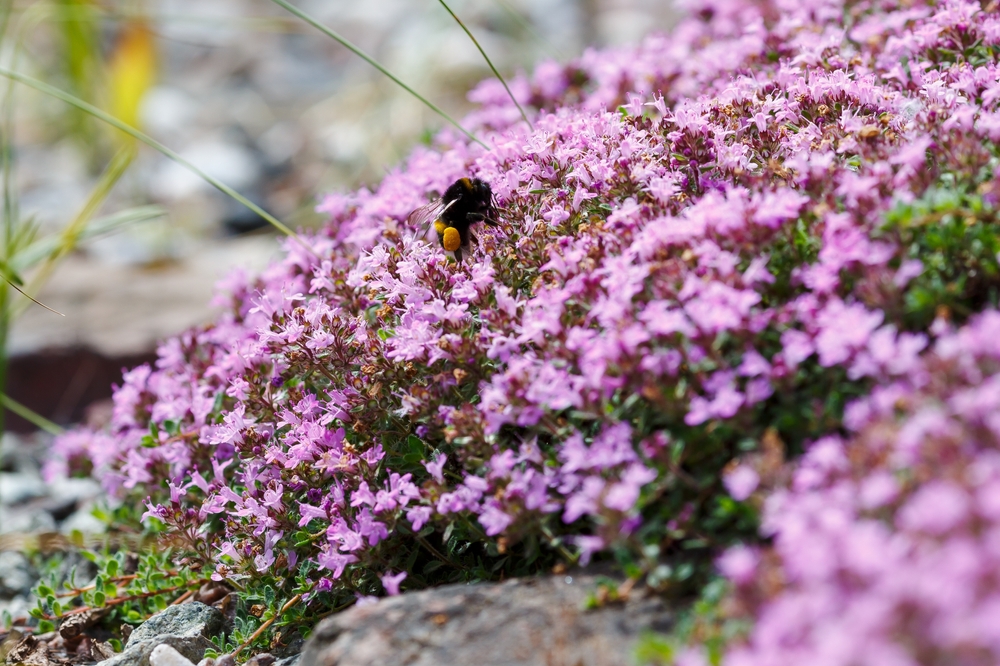
Creeping thyme is a great choice for sloped landscapes due to its ability to spread quickly and create a dense mat. This hardy perennial thrives in full sun and well-drained soil, making it ideal for slopes with good sunlight exposure. Once established, creeping thyme is highly drought-tolerant, requiring minimal care throughout the year. Its mat-like structure helps control soil erosion, especially on slopes where water runoff can wash away soil. Additionally, it releases a pleasant fragrance when stepped on, adding an aromatic touch to your garden.
The plant’s ability to grow in poor soil and its low-maintenance nature make it a perfect option for busy gardeners. Creeping thyme can also tolerate foot traffic, making it an excellent choice for stepping stones or walkways. During the blooming season, tiny purple flowers add a lovely pop of color, and the plant attracts bees and other pollinators, supporting local wildlife. This ground cover will continue to thrive and add charm to your landscape with very little upkeep.
Ajuga (Bugleweed)
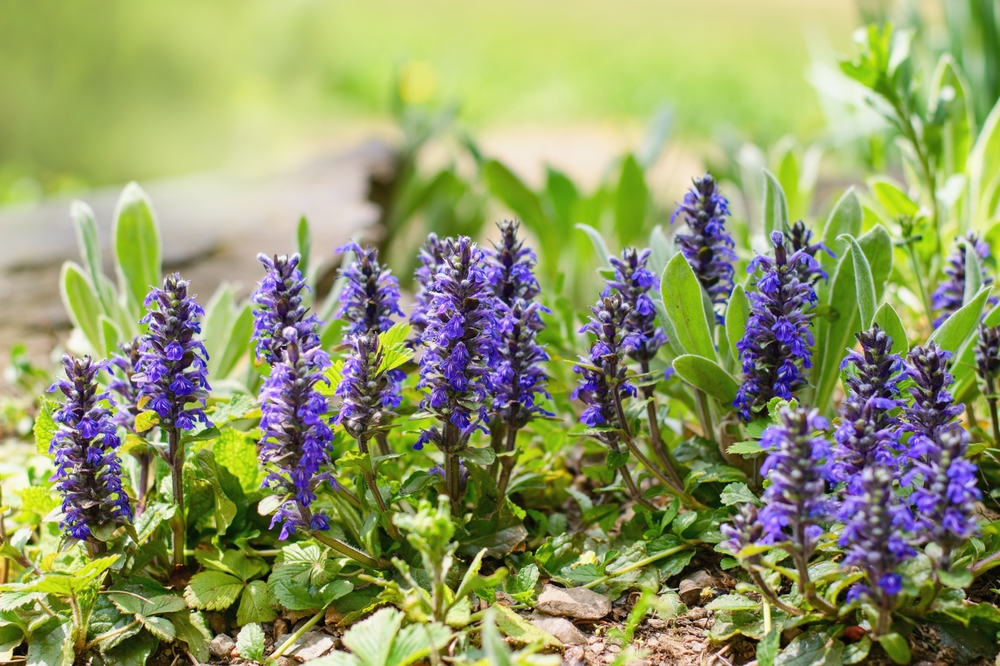
Ajuga is a versatile ground cover that thrives in both sunny and partially shaded slopes. It is particularly valuable for its fast-growing nature, quickly filling in empty spaces and creating a dense carpet of color. The plant is capable of withstanding different soil types, from moist to well-drained, making it adaptable for various sloped terrains. Once established, ajuga requires minimal maintenance, making it perfect for areas where upkeep needs to be limited. Its ability to spread rapidly helps control soil erosion by stabilizing the slope.
In addition to its practicality, ajuga boasts vibrant foliage that changes color through the seasons, offering shades of green, purple, and bronze. During the spring and early summer, ajuga produces blue or purple flower spikes that add a unique visual appeal to your landscape. These blooms also attract pollinators like bees, which benefit your garden. Its ability to thrive in low-maintenance environments makes it an excellent option for those looking to add beauty and function to their sloped yard.
Sedum (Stonecrop)
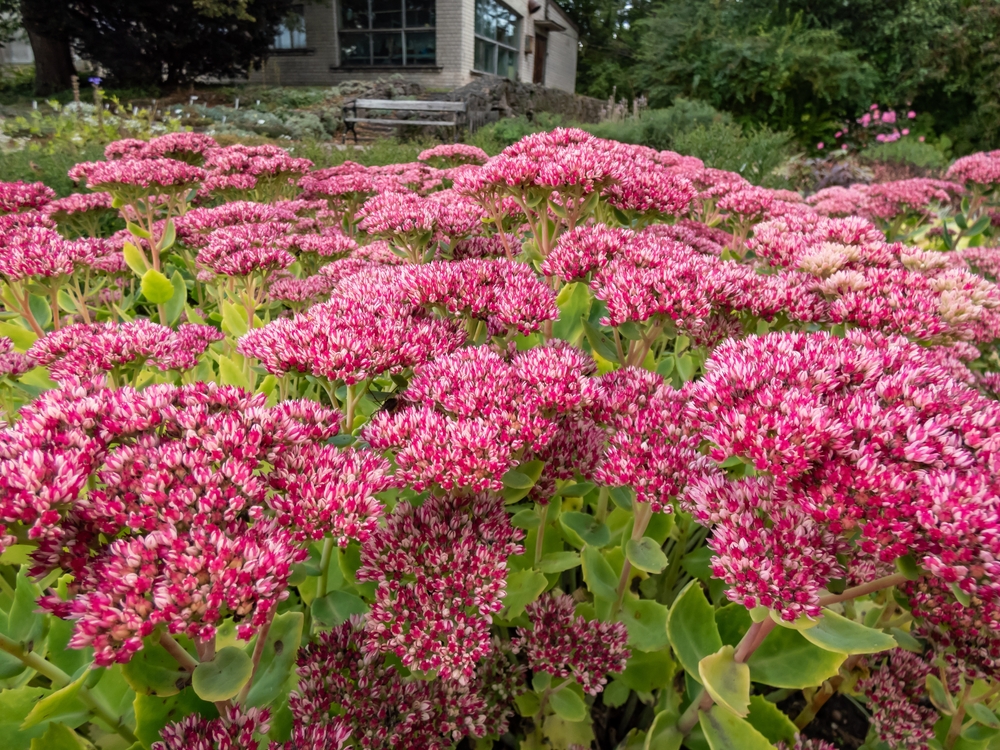
Sedum is a popular choice for ground cover on slopes because of its ability to thrive in dry, rocky conditions. As a succulent, it stores water in its fleshy leaves, making it particularly drought-tolerant. This trait makes it a low-maintenance option for slopes that may not receive regular rainfall or irrigation. Sedum grows in a mat-like fashion, helping to reduce soil erosion by stabilizing the slope and holding the soil together. The plant is hardy and requires very little care once established, making it a practical solution for sloped areas.
Besides its durability, sedum adds visual interest with its variety of colors and textures. The plant produces clusters of star-shaped flowers in late summer and fall, usually in shades of pink, yellow, or red, creating a beautiful contrast with the green foliage. Sedum also attracts beneficial insects like bees and butterflies, supporting the local ecosystem. Its low-growing nature ensures it stays manageable on slopes, spreading without overwhelming surrounding plants.
Pachysandra
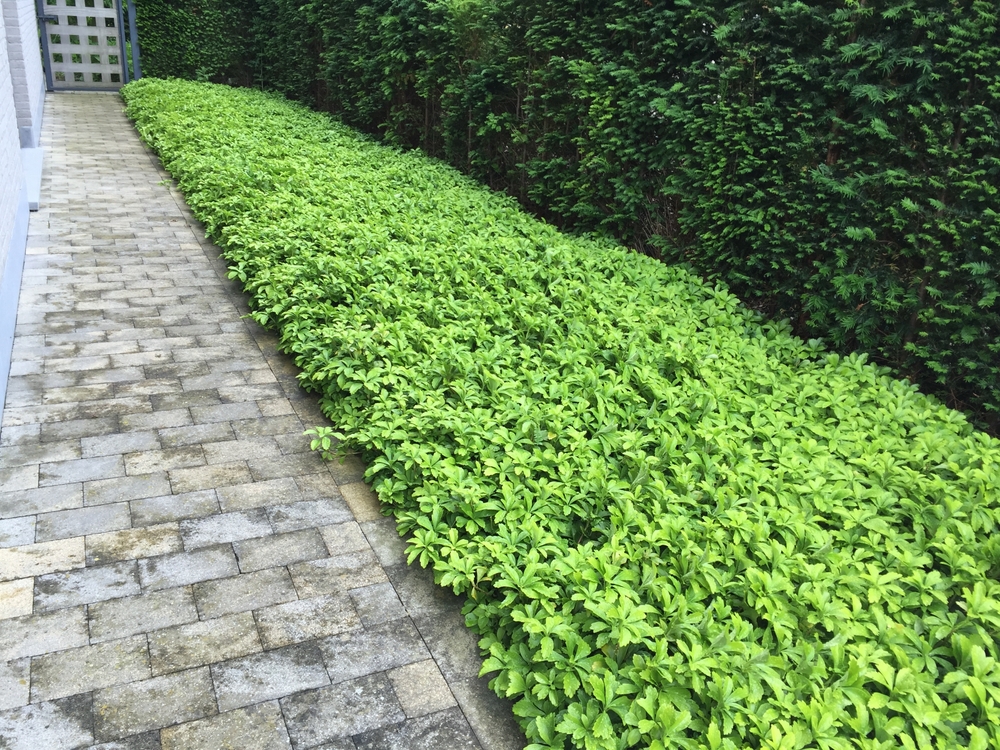
Pachysandra is a hardy, evergreen ground cover that works well in shaded areas, making it ideal for sloped landscapes with tree cover or low-light conditions. Its dense, spreading habit helps prevent soil erosion by stabilizing the ground, particularly in areas where runoff could cause issues. Once established, pachysandra requires very little maintenance, as it tolerates dry conditions and poor soil. Its ability to adapt to shaded spots makes it a versatile choice for slopes that are difficult to plant with sun-loving species.
Pachysandra’s dark green leaves provide year-round visual interest, and the plant can handle foot traffic, making it a great option for areas where people may walk. In spring, it produces small white or light purple flowers, adding a subtle touch of color to the landscape. Because of its slow growth and dense coverage, it can outcompete weeds, further reducing the need for maintenance. Pachysandra’s low-maintenance nature and ability to thrive in shady, sloped areas make it an excellent option for gardeners seeking a reliable ground cover.
Vinca Minor (Periwinkle)
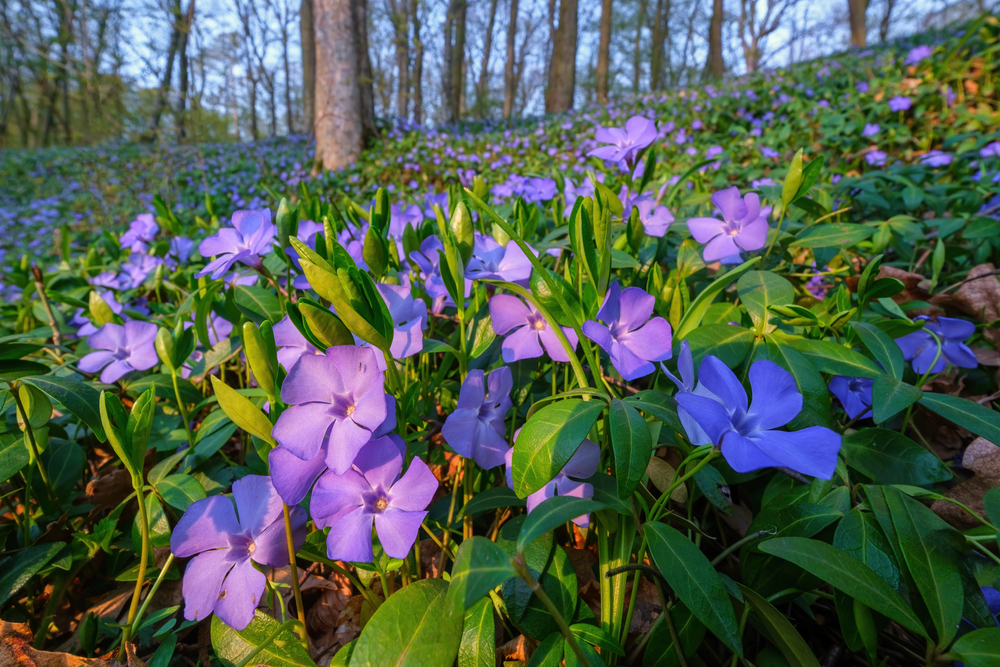
Vinca minor, commonly known as periwinkle, is an evergreen ground cover that excels in both sunny and partially shaded slopes. This low-growing plant spreads quickly, forming a thick mat of foliage that helps to prevent soil erosion. Vinca minor is known for its attractive green leaves and vibrant blue or purple flowers, which bloom in spring and sometimes sporadically throughout the summer. The plant is well-suited for slopes because it requires minimal attention once established, thriving in a variety of soil types.
Vinca minor’s creeping habit allows it to spread over a large area, stabilizing the soil and making it a good choice for erosion control. It also tolerates a range of conditions, including dry periods and moderate foot traffic, which makes it a durable option for sloped landscapes. The plant is an excellent choice for gardeners looking for a reliable and visually pleasing ground cover that requires little maintenance. Its bright flowers and glossy green leaves make it a versatile addition to any slope.
Creeping Jenny (Lysimachia nummularia)
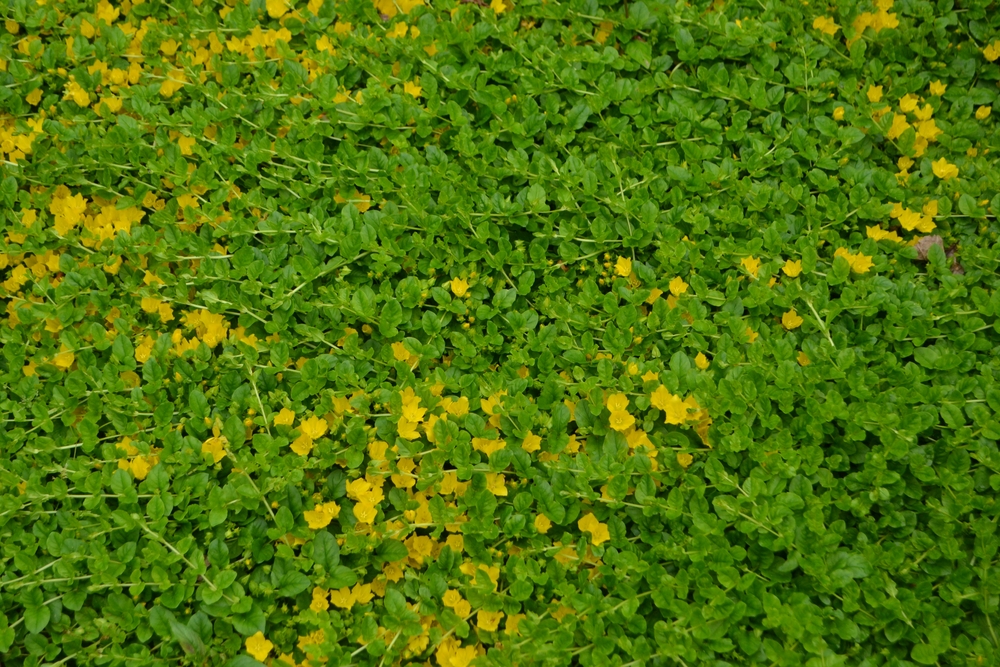
Creeping Jenny is a fast-growing perennial that thrives in both full sun and partial shade, making it a perfect option for sloped landscapes with varying light exposure. Known for its small, round, bright green leaves, it can quickly spread and form a dense ground cover. Creeping Jenny is particularly useful for erosion control, as its low-growing habit stabilizes soil and reduces runoff. Once established, it is drought-tolerant and requires minimal care, making it an ideal choice for low-maintenance gardeners.
In addition to its functional benefits, Creeping Jenny adds a pop of color to your landscape. The plant produces small yellow flowers in the summer, offering a cheerful contrast to the green foliage. Its spreading nature helps fill in empty spaces, preventing the growth of weeds and other unwanted plants. Creeping Jenny’s ability to grow in a variety of soil conditions, along with its minimal care requirements, makes it an excellent ground cover for sloped areas.
Liriope (Liriope spicata)
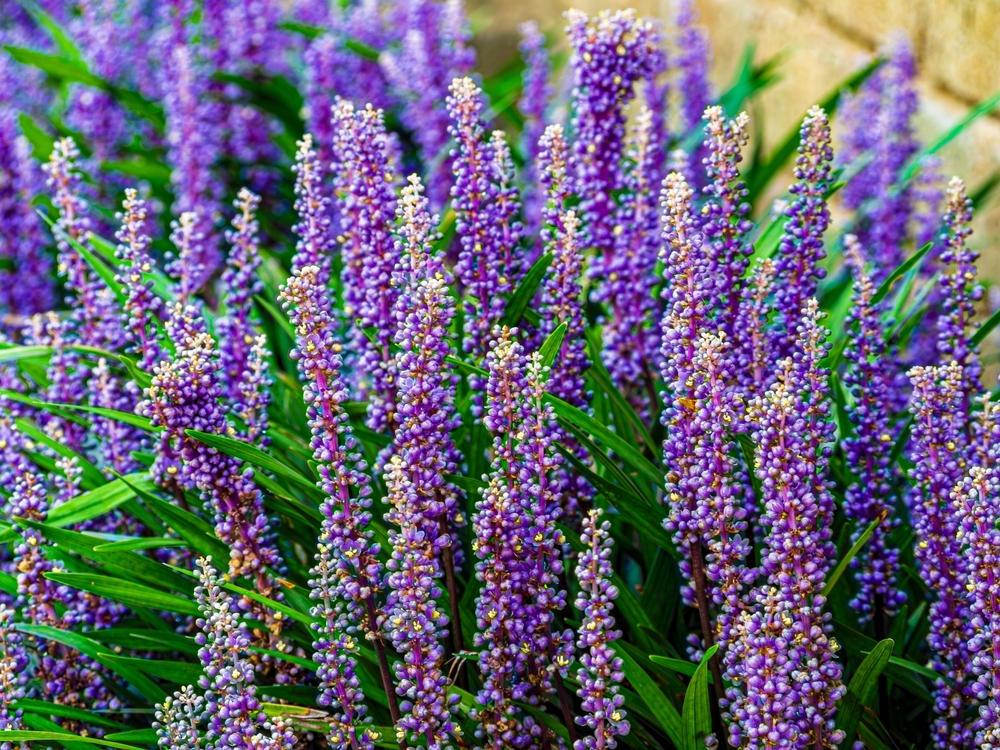
Liriope, often referred to as monkey grass, is a versatile and low-maintenance ground cover that works well on sloped landscapes. It thrives in both sun and shade, making it a great option for areas with varying light conditions. Liriope grows in dense clumps, forming a mat that helps prevent soil erosion on slopes, even in areas prone to runoff. This plant is drought-tolerant once established, requiring little care beyond occasional watering during dry spells.
Liriope features narrow, grassy leaves and produces spikes of purple or white flowers in late summer, which add a touch of color to the landscape. Its ability to spread and form a dense carpet makes it ideal for filling in gaps and covering large areas. Additionally, liriope’s tough nature allows it to tolerate some foot traffic, making it a suitable choice for areas where people may walk. It also helps to suppress weeds, making maintenance even easier.
Chamomile (Chamaemelum nobile)
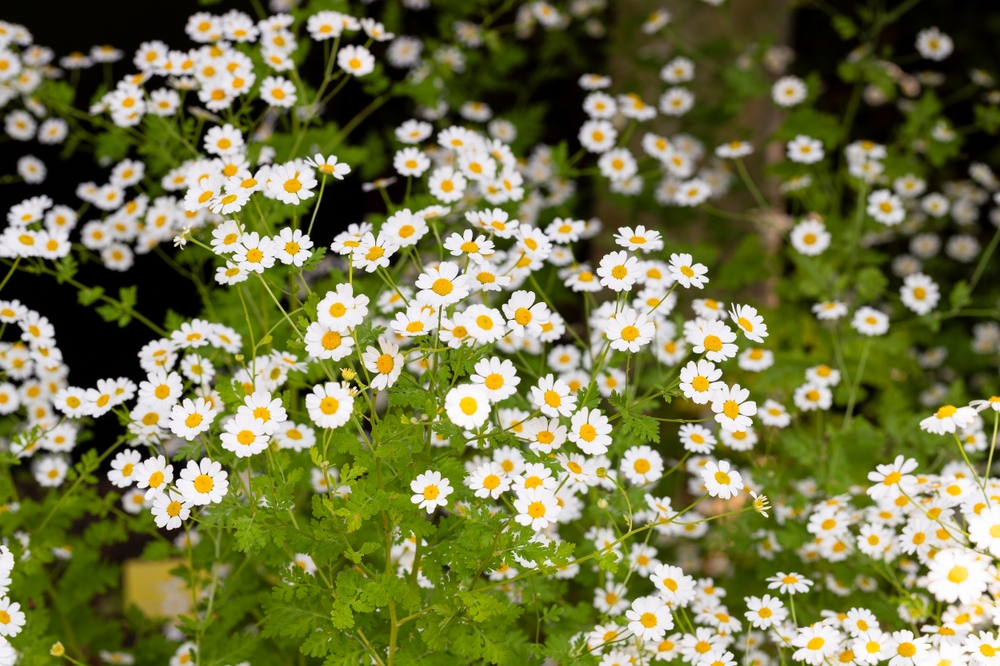
Chamomile is a fragrant, low-growing herb that can be an excellent addition to sloped gardens. Known for its small, daisy-like flowers and aromatic leaves, chamomile thrives in well-drained soil and full sunlight. This herb forms a dense mat that helps prevent soil erosion on slopes by holding the soil together. Chamomile is also drought-tolerant once established, requiring minimal care and maintenance.
Chamomile’s fragrant flowers can be harvested for use in teas or used to attract pollinators like bees and butterflies to your landscape. It is an ideal choice for gardeners seeking an herb that offers both beauty and function. In addition, chamomile’s soft foliage and small flowers create a pleasant, natural appearance that blends well with other plants. This ground cover works well on sloped areas that receive full sun, where it can spread and fill in the space while providing year-round visual interest.
Corsican Mint (Mentha requienii)
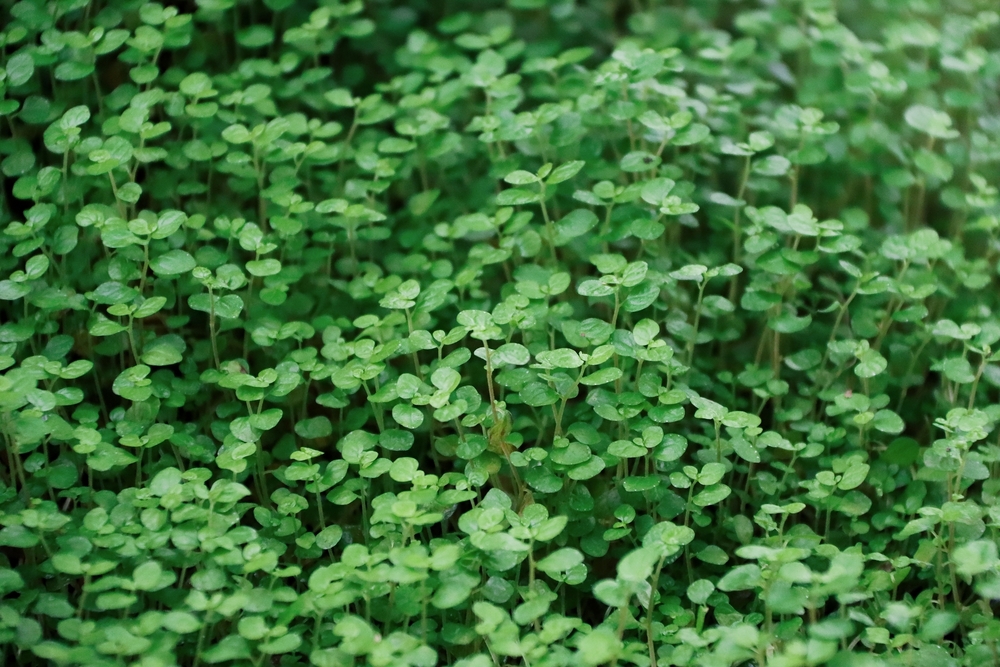
Corsican mint is a small, low-growing herb that is perfect for sloped landscapes where erosion control is needed. This mint variety forms a dense, carpet-like cover with tiny, aromatic leaves that release a pleasant fragrance when stepped on. Corsican mint thrives in moist, well-drained soil and is partial to full sunlight. Once established, it is relatively low-maintenance and requires little water, making it ideal for gardeners looking for a hardy ground cover.
Corsican mint’s dense growth helps stabilize the soil on slopes, reducing runoff and preventing erosion. Its small, round leaves create a soft, green mat that adds texture and interest to the landscape. In addition, the plant produces small, purple flowers in the summer that attract pollinators. Corsican mint can tolerate light foot traffic, making it perfect for pathways or areas where people may walk. This plant’s natural fragrance and vibrant growth make it a valuable addition to sloped landscapes.
Ground Morning Glory (Convolvulus sabatius)
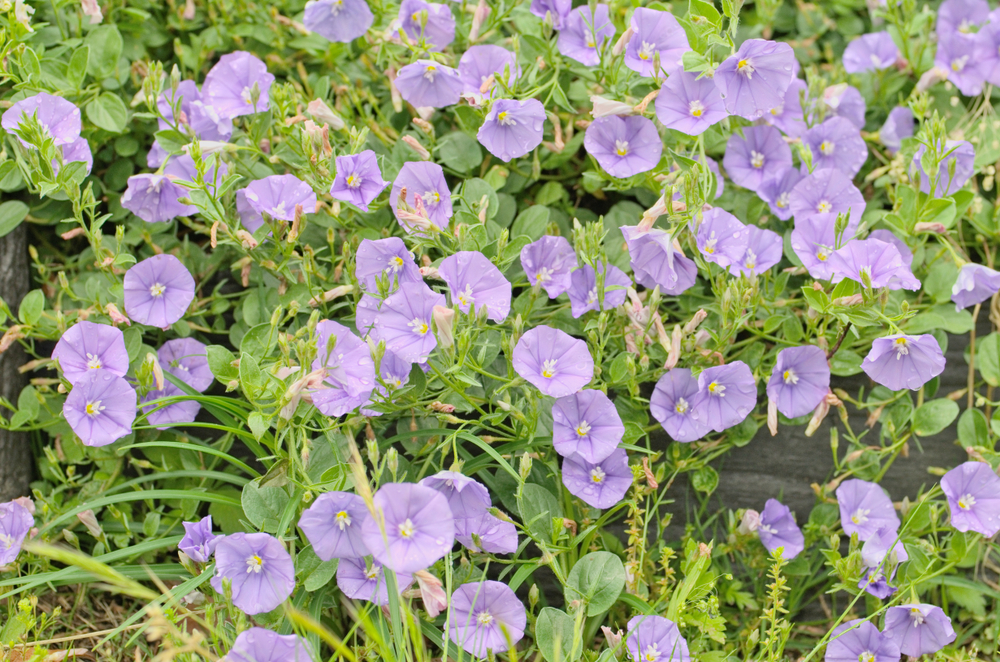
Ground morning glory is a trailing ground cover that is perfect for sloped areas where you want to add vibrant color and texture. This plant produces bright, funnel-shaped flowers in shades of blue, purple, and white that bloom throughout the summer, attracting bees and butterflies. It spreads quickly, forming a dense ground cover that helps stabilize the soil and reduce erosion. Ground morning glory thrives in full sun and well-drained soil, making it suitable for sloped landscapes that receive ample sunlight.
The plant’s rapid growth and spreading nature make it effective at covering slopes, while its vivid flowers create a beautiful, colorful display. Ground morning glory also helps to crowd out weeds and other unwanted plants, minimizing the need for maintenance. Its low-maintenance nature and attractive blooms make it an excellent choice for gardeners seeking to add both beauty and function to sloped areas. Once established, this plant is drought-tolerant and can thrive in hot, dry conditions.
Sweet Woodruff (Galium odoratum)
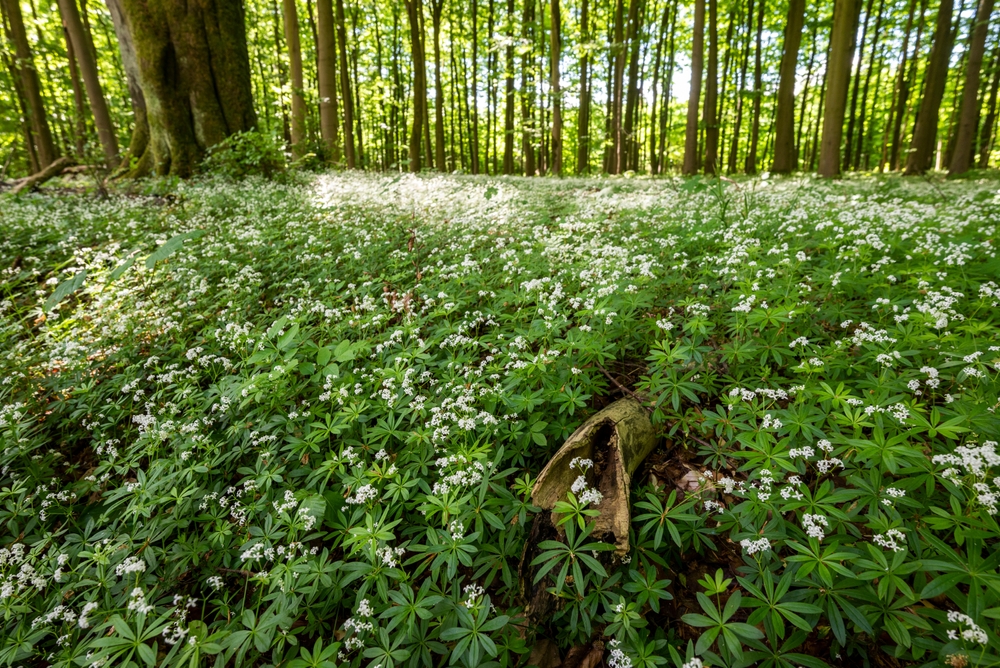
Sweet woodruff is a fragrant, low-growing perennial that works well as a ground cover for shady slopes. This plant thrives in moist, well-drained soil and can handle areas with full to partial shade, making it an ideal choice for slopes under tree cover. Sweet woodruff spreads quickly, forming a dense mat that helps control soil erosion and prevent weed growth. Its delicate, whorled leaves and small white flowers in the spring provide visual interest throughout the year.
Sweet woodruff’s dense growth habit helps stabilize slopes, while its shade tolerance allows it to thrive in areas where many other plants may struggle. It is also relatively low-maintenance, requiring only occasional watering during dry periods. The plant’s pleasant fragrance adds a sensory dimension to your landscape, making it a great choice for shaded sloped areas. Sweet woodruff is an excellent ground cover for gardeners looking for a plant that thrives in low-light conditions while providing both aesthetic appeal and soil stabilization.
This article originally appeared on Avocadu.
